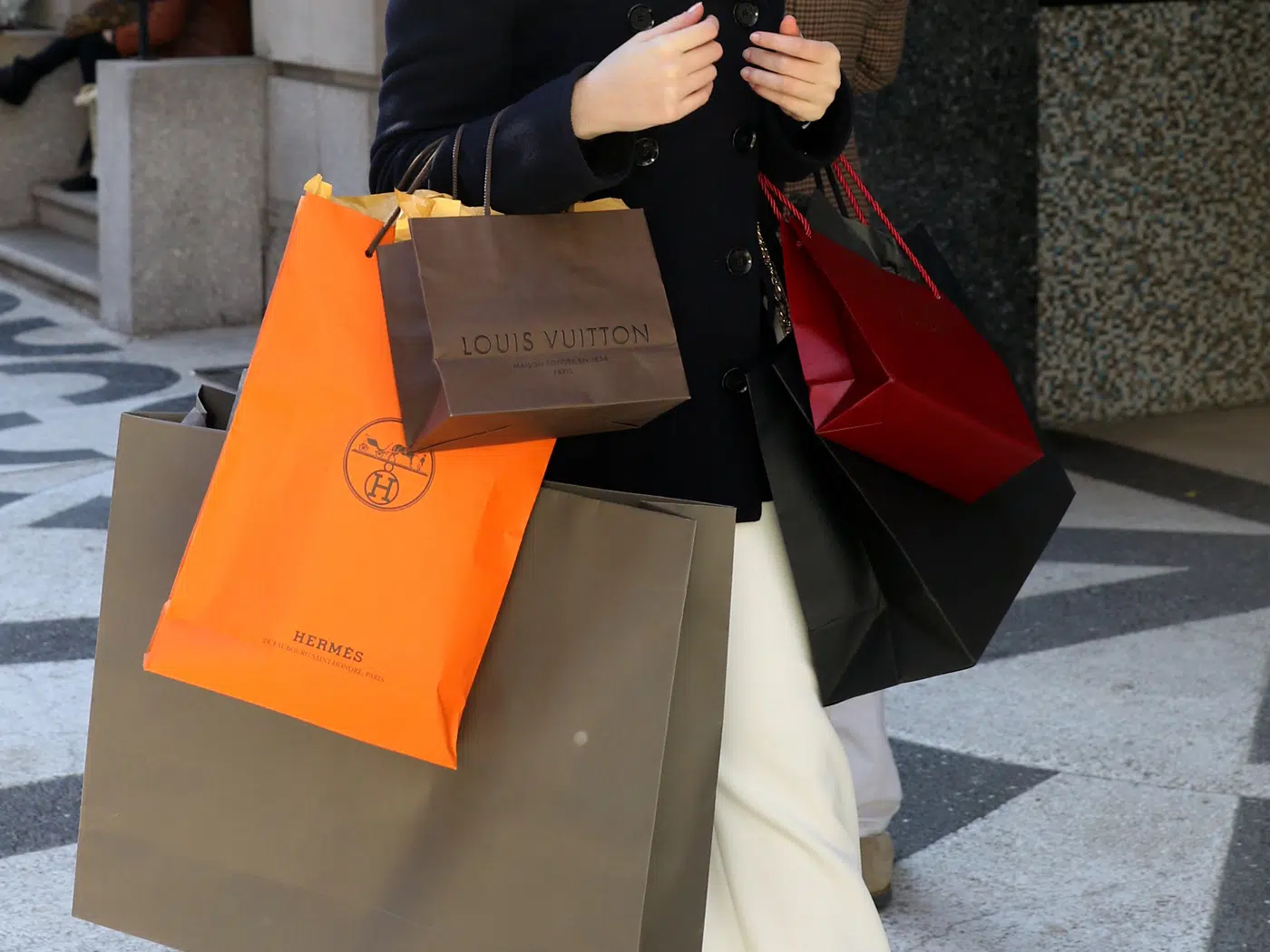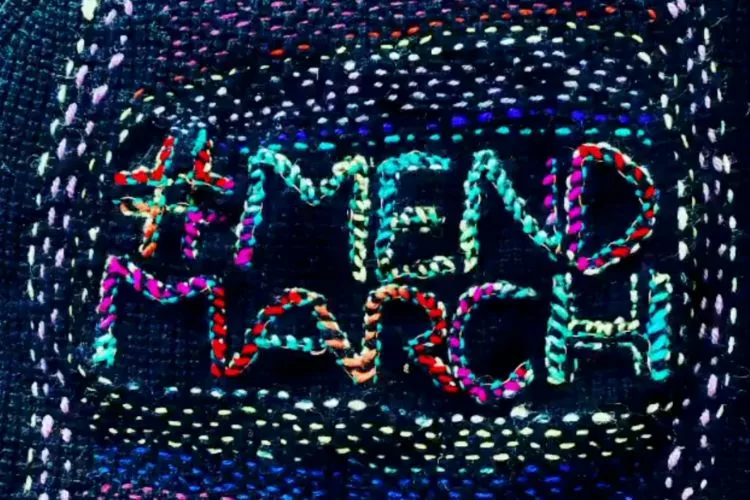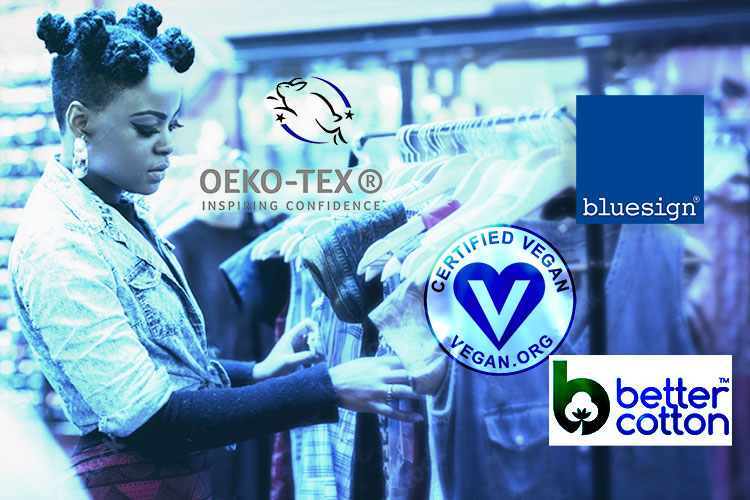
As the fashion industry faces scrutiny for its environmental footprint, some argue that legislation is the key to pushing it towards genuine sustainability.
I used to believe that not all fast fashion was created equal. Fast fashion only referred to cheap clothing from places like Forever 21, Zara, and H&M because the price reflected the materials and labor used. I used to think slightly pricier brands– like Free People and Urban Outfitters– paid their workers more, used better quality materials, and that exploitation wasn’t rampant in luxury and designer labels. My wardrobe started to evolve when I realized how wrong I was. All these brands used similarly bad practices at the same factories. Currently, nearly every item in my closet is secondhand. When I need to purchase something new, like socks or undergarments, I buy from smaller, sustainable brands that are transparent about their production methods.
While these kinds of individual lifestyle choices are essential, we still need substantial, widespread change across the fashion industry if we plan to keep the environment alive for generations to come. The bottom line is, there needs to be more legislation around the fashion industry. Examining this can help us understand what still needs to be done and how we can play a role in this process.
On June 1, 2023, the EU parliament voted to pass a set of recommendations to protect against fast fashion, ban the destruction of unused goods, promote circularity, and support garment workers’ rights.
This means textiles must be: durable, easy to reuse, repair and recycle, and free of chemical and hazardous coatings. They should be manufactured under stringent ethical supply chains with respect for workers, animals, and the environment.
While it might be tempting to get your hopes up after reading such a headline, we’ve seen this before. News comes out about legislation that will “revolutionize” the fashion industry. Then months or years go by, and we never hear about that law again –much less see the significant changes promised.
In the case of the EU’s recent recommendations, the absence of specific language to describe the proposed effects of the regulations is suspicious.
A Business Of Fashion article addressing the news makes wide-sweeping claims that the EU is all set to “end fast fashion.” But what does that actually mean? The article provides little to no easily accessible information or specific details on the quantifiable impact these new rules will have– how much less new clothing they will produce or proposed reductions in environmental pollution percentages, for example– or what the positive outcomes will look like.
Indeed, the article concedes that “A long-awaited draft of planned greenwashing regulations published in March remained vague on critical technical details.” There is still a lack of uniformity when it comes to defining what makes a product or a practice “eco-friendly.” This failure to standardize is hurting the government’s ability to regulate.
Tara St. James, the Senior Director of Sustainability at Moose Knuckles Canada and the Strategic Advisor of Sustainability at Another Tomorrow, recognizes that creating a one-size-fits-all set of specific sustainability standards is very difficult.
She has found success with a three-pronged approach to guiding principles which consists of animal welfare, environmental welfare, and human welfare, with the logic being that companies can more easily adapt these guidelines to fit their needs. The next question is how to define these more general guidelines for future legislation in a way that can still be enforced.
Even without specifics, EU Fashion councils are already pushing back against the regulations. The European Fashion Association is concerned about disclosing “sensitive” inventory information to the public, having their products pass the durability test, and being unable to destroy the material they don’t sell. These are three broad aspects of the new regulations, and such criticism early on does not bode well for their effectiveness.
The FABRIC Act
On this side of the Atlantic, The Fashioning Accountability and Building Real Institutional Change Act (the FABRIC Act), prides itself as “America’s first federal fashion bill” and “proposes major incentives to accelerate domestic apparel manufacturing and new workplace protections to cement the US as the global leader in responsible apparel production.” This is promising for the American garment industry. However, it doesn’t do much to stop what’s happening abroad.
Before fixing our clothing production system, the current systems in countries like Bangladesh, India, and Vietnam must be dismantled and rebuilt. According to the Business Standard, approximately 9.8% of all clothing exported to America from outside the country is manufactured in Bangladesh alone. This figure will not change anytime soon if fashion companies still have access to extremely cheap labor –a byproduct of inhumane working conditions and sometimes unlivable wages.
These countries do not prioritize their garment workers and, as a result, little legislation is being recommended to protect workers. Most new legislation we’ve seen comes from the US or the EU and cannot simply be applied to other countries.
The EU parliament recently passed a draft law “requiring big companies in fashion and other industries to check for human rights and environmental abuses in their supply chains.” But how would that be enforced, and how do we stop human rights violations from happening in the first place?
The same can be said for environmental protection laws. The US and the EU have stricter codes for preventing pollution, which is why we often see the worst of these crimes against the environment happening in other countries. For example, a still-growing textile landfill in the Atacama desert in Chile is visible from space. Headlines like these expose how vast, unfathomable, and inadequately publicized these environmental effects can be when they go unchecked.
Should the Responsibility Always Fall on the Consumer?
Another issue with many of these so-called industry-altering laws is that the burden of enforcing these new rules fall on the consumer rather than on the companies causing the problems. The EU recommendations, for instance claim to “help consumers to make more responsible and ethical choices.” While this sounds nice– if consumers are better educated about where their clothes come from and have easy access to this information, they are more likely to make informed decisions– it is not always realistic.
For some shoppers, the amount of water used to produce their T-shirts is not their highest priority. Statistically, customers “care less about the scientific causes behind sustainability unless they are tied to a reason to care,” which is, in most cases, a reason that affects them individually. Many people convinced to buy sustainably can see the personal benefit of doing so. But the change must be structurally from within the system for a fundamental, long-lasting impact.
Michael Schragger, the founder of Stockholm’s Sustainable Fashion Academy, states that “Consumers are not, can not and should not be the driving force for completely changing an industry — not least because as long as it’s easy, fast and cheap to buy fashion, then the sustainability aspect of the offer will always be a secondary choice.”
On the other hand, Clare Press, host of the well-known podcast Wardrobe Crisis, stipulates that “Three things work in concert: consumers, brands, and legislation. We need all three to change this system. It can’t just be all about the choices you make as a shopper.” Both Schragger and Press agree that consumers alone are insufficient, but Press understands that they are still part of the solution. Consumers generate a public consensus which encourages politicians to realize that there is an issue and start drafting legislation.
Consumers As Activists: Trends Spark Political Change
Lately, buying sustainably feels like another fashion trend; but this isn’t necessarily bad. Influencers on TikTok and Instagram have popularized “thrift hauls” and take their viewers on tours of what they find at thrift stores and flea markets. In place of what used to be YouTubers spending hundreds on fast fashion hauls, buying secondhand has become normalized, and for many young people, it is their preferred method of shopping. My friends used to scoff at buying something from an estate sale, disgusted at the thought of wearing a dead person’s clothing. But compared to the horrors of the fast fashion industry, I’ll take the used sweater any day. At least I know exactly where it’s coming from. But buying secondhand is just the beginning, not the end.
As Clare Press highlights, “…fashion is a fantastic communication medium.” Clothes inherently have an activism element because you express yourself and send a message whenever you put together an outfit, even if you don’t realize it. I think the recent proliferation of secondhand has led people, especially young people, to be more intentional about how they dress.
We don’t need legislation that “helps” consumers make better choices; we need detailed, adaptable guidelines that force corporations to stop killing the environment and keep them in check so we know who implements the eco-conscious practices they preach and who is just greenwashing us. We also need accountability, which means brands must take responsibility for every part of the production process, not just the final result.
Elizabeth Cline, Remake’s Director of Advocacy and Policy, suggests that “the concept of sustainability has become really abstracted, and we’re never talking about whose environment is at stake.” We are all being affected, and we are all being affected right now. Kline underscores that these companies will never feel obligated to be sustainable. Their only concern is making a profit, and as long as this is the case, they will never volunteer to adopt completely ethical systems.
The debate of whether or not the fashion industry can contribute to a circular economy is not a question: the answer is it must.
“Saving the environment” has become such an intangible hypothetical. Yet what begins as grassroots activism translates into real change in manufacturing and material sourcing, making a difference at every level. We need to expect more from proposed legislation and make sure it gets passed. and reinforced. It’s the only way to make meaningful progress.
–Emma Kendall
Notes:
“A Massive Mountain of Fast Fashion Landfill Can Now Be Seen from Space.” Dazed, June 5, 2023, www.dazeddigital.com/fashion/article/60016/1/a-mountain-of-landfill-can-now-be-seen-from-space-atacama-fast-fashion-shein.
Harrell, Alexandra. “Not All Sustainability Messages Are Created Equal, Report Finds.” Sourcing Journal, June 21, 2023, sourcingjournal.com/sustainability/sustainability-news/new-york-university-stern-business-sustainability-messaging-edelman-regenerative-air-pollution-441006/.
Kent, Sarah. “Explainer: Why New Sustainability Rules Are Worrying the Fashion Industry.” The Business of Fashion, June 17, 2023, www.businessoffashion.com/articles/sustainability/european-fashion-alliance-eu-regulation-sustainability-lobby/.
Kent, Sarah. “Will Europe ‘End Fast Fashion’?” The Business of Fashion, June 12, 2023, www.businessoffashion.com/articles/sustainability/eu-europe-end-fast-fashion-sustainability-regulation-due-diligence/.
Moorman, Katya. “From Vogue to the Wardrobe Crisis: Our Interview with Clare Press.” No Kill Mag, April 6, 2023, www.nokillmag.com/articles/best-clare-press-interview-the-wardrobe-crisis/.
Moorman, Katya. “In Conversation with Journalist + Fashion Activist Elizabeth Cline.” No Kill Mag, June 23, 2022, www.nokillmag.com/articles/in-conversation-with-elizabeth-cline/.
Moorman, Katya. “What Exactly Is Sustainable Fashion? We Asked an Expert!” No Kill Mag, April 27, 2023, www.nokillmag.com/articles/what-exactly-is-sustainable-fashion-we-asked-an-expert/.
“Parliament Wants to Make EU Textiles and Clothing Industry Greener: News: European Parliament.” Parliament Wants to Make EU Textiles and Clothing Industry Greener | News | European Parliament, June 1, 2023, www.europarl.europa.eu/news/en/press-room/20230524IPR91913/parliament-wants-to-make-eu-textiles-and-clothing-industry-greener.
Paton, Elizabeth. “The New Laws Trying to Take the Anxiety out of Shopping.” The New York Times, September 30, 2022, www.nytimes.com/2022/09/30/fashion/fashion-laws-regulations.html.
“The Fabric Act: What It Is & Why It Matters.” Remake, 21 June 2022, remake.world/stories/fabric-act-what-it-is-why-it-matters/?gclid=Cj0KCQjw1rqkBhCTARIsAAHz7K23v2s7WBQTb-gpg9qge884mEfvvPdr5FP7Xk1WhbGQj4qM3eUT2pMaArToEALw_wcB.
Uddin, Jasim & Hossain, Reyad. “One in Every Ten Garments Exported to the US Goes from Bangladesh.” The Business Standard, February 10, 2023, www.tbsnews.net/economy/rmg/one-every-ten-garments-exported-us-goes-bangladesh-583042.
Related Articles






